Type species: Ambulyx rubricosa Walker, 1856.
An eastern Palaearctic and Oriental genus with seven species, one of which has recently entered the western Palaearctic region.
IMAGO: Most species are recognizable by having dorsally a reduced or rudamentary 'ocellus' in the hindwing anal angle, green marbled patterns on the forewing, which is more or less falcate in the male, crimson hind wings, and a green thorax and abdomen. Retinaculum and frenulum present. Proboscis short, weak and non-functional. Pilifer somewhat enlarged, with bristles. Labial palpi slender and reduced, applied to the head, not projecting, larger in male than female. Male antenna compressed ventrally, with long setae; ultimate segment long and filiform. Abdomen dorsally with both narrow spiniform and broad scales. Tibiae not spinose, longer than the respective first tarsal segments; spur of foretibia about half the length of the tibia; those of the mid- and hindtibia very short, the terminal one of the hindtibial pair half as long as the tibia is broad. Pulvillus and paronychium present, the latter with two lobes on either side.
Genitalia. In the male, valva reduced and lacking a patch of modified friction-scales. Sacculus strongly developed, the apical process double or simple; if the latter, preceded by several teeth.
OVUM: Ovoid, pale green, very similar to Smerinthus.
LARVA: Resembles that of Smerinthus, but with large tubercules on anal flap. Horn erect, slightly curved and granulose.
PUPA: Similar to that of Smerinthus. Cremaster extended, with a pair of spines on tip and a few lateral ones.
HOSTPLANT FAMILIES: Unknown for all bar one species, which feeds on Ulmaceae.
UK: Elm Hawkmoth
Smerinthus tatarinovii Bremer & Grey, 1853, in Motschulsky, Etud. ent. 1: 62.Type locality: Peking [Beijing] area, China.
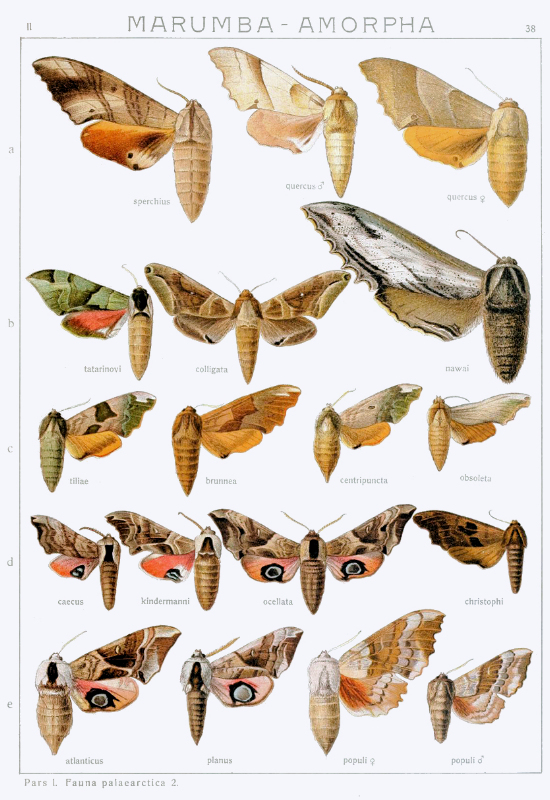
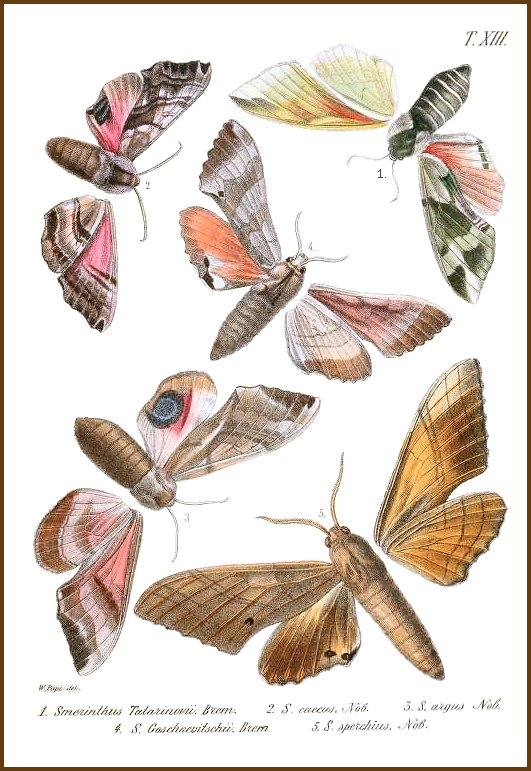
Holarctic; eastern Palaearctic region. Pleistocene refuge: Monocentric -- Manchurian refuge.
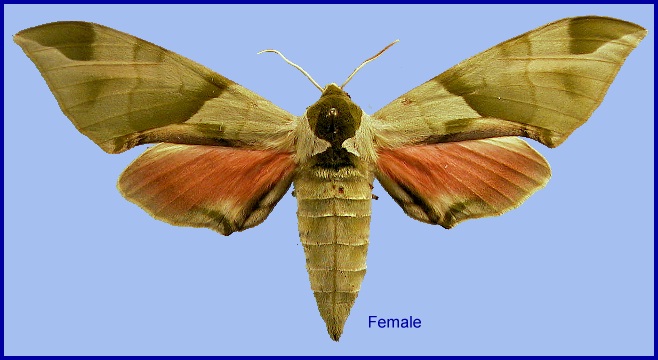
Wingspan: 57--82mm. Very like Smerinthus kindermannii Lederer, 1853, but with the forewing colours predominantly green and grey; however, there is a northern recessive female form in which all green coloration is replaced by brown (f. eversmanni (Eversmann, 1854)). All three specimens from Xinjiang Province, China (in the collection of the Shihezi Agricultural College (SACS)) were of this brown form (Pittaway & Kitching, 2000).
In the male genitalia, uncus narrow and evenly tapered. Gnathos reduced, lacking medial lobe. Valva not broadly spatulate, instead a slender lobe but apically rounded or bluntly pointed; costal process is a broad, setose lobe. Harpe similar to that of Callambulyx rubricosa Walker, 1856 and Callambulyx poecilus (Rothschild, 1898) and with two distal, pointed processes. Phallus with a narrow dentate flap-like prolongation, which is inverted when vesica is retracted. In the female genitalia, sterigma distinctive, in form of a long triangular lobe ending in two points and situated anterior to the ostium bursae.
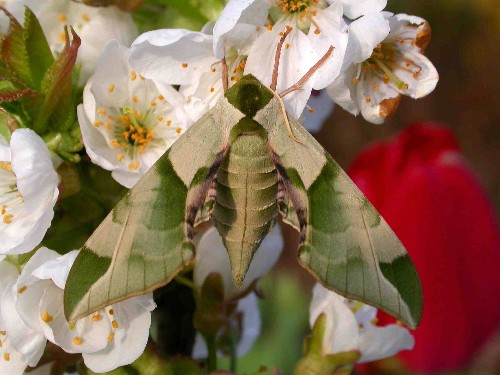
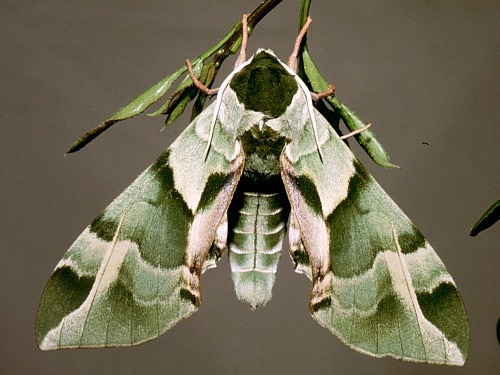
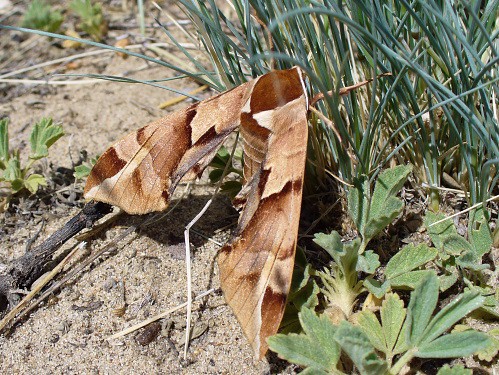
Very similar to that of Mimas tiliae (Linnaeus, 1758).
The three specimens from Shihezi, Xinjiang, bear the dates 15.vi.1982, 12.vii.1982 and 25.vii.1983 (Pittaway & Kitching, 2000). Farther east this species is double-brooded and it may also be so in Xinjiang.
OVUM: Oval, 1.35 x 2.03mm. Very similar to that of Smerinthus ocellatus (Linnaeus, 1758).
LARVA: Full-fed 60--80mm.
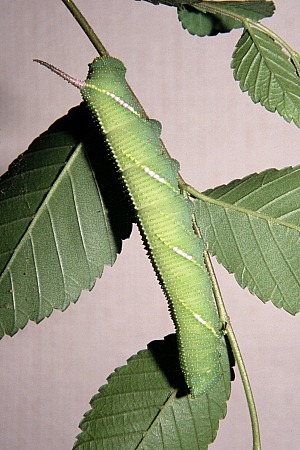
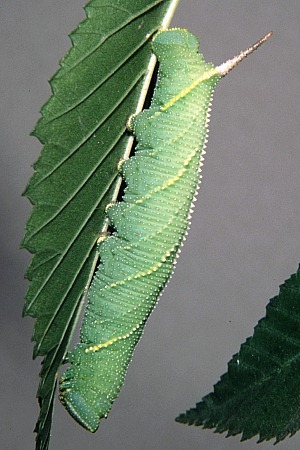
Depending on the quality of the hostplant, larvae of this species can undergo five or six instars. The mature larva is very like that of Smerinthus ocellatus, except that it has a very noticable narrow cream dorsal line and alternate bold and faint oblique lateral stripes. The horn is almost straight and reddish.
Found in June, July and August.
Hostplants. Various species of Ulmus, including Ulmus pumilus, Ulmus campestris and Ulmus parvifolius; also Zelkova spp. in Japan. Several Chinese publications mention Salix, but this requires confirmation. [It should be noted that with the successful rearing of Callambulyx rubricosa rubricosa Walker, 1856 on Salix caprea (Eitschberger, U. & Hoa Binh Nguyen, 2012), the records for Salix are probably correct.]
PUPA: 34--41mm. Dark mahogany brown and slightly glossy; tapering caudad from a blunt head and thorax. Proboscis not present, but replaced by a knob-like tubercle. Wings and abdominal segments finely punctate. Cremaster broadly conical, with a sharp point; tuberculate. Similar to that of Smerinthus ocellatus, but less glossy. Formed in an almost silk-free cell in the soil. The overwintering stage.
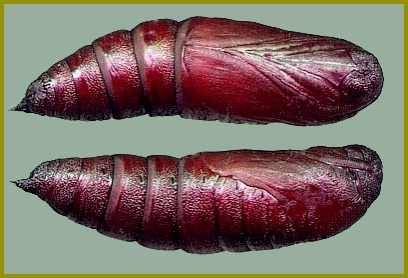
Unknown.
Western Xinjiang Province (Shihezi), China (Pittaway & Kitching, 2000).
The occurrance of Callambulyx tatarinovii tatarinovii near the Kazakh border (Shihezi) extends considerably the westward distribution of this eastern Palaearctic species. This has probably come about due to the extensive planting of Ulmus trees across northern China, forming a habitable corridor which Callambulyx tatarinovii tatarinovii has exploited. Smerinthus planus Walker, 1856 has also reached the same area by the same means.
Extra-limital range. From northern Xinjiang across northern China, Mongolia (Knyazev, Makhov, Matov & Yakovlev; 2020), Buryatia/Transbaikalia (Izerskiy, 1999; Sergei Rybalkin, pers. comm.; Gordeeva & Gordeev, 2011) to the Russian Far East, and then south through Korea and eastern China to, maybe, eastern Xizang/Tibet. [The latter may be a northern population of the similar Callambulyx diehli Brechlin & Kitching, 2012. This requires further study.]
Japan as Callambulyx tatarinovii gabyae Bryk, 1946, and Taiwan as Callambulyx tatarinovii formosana Clark, 1935.
 Return to species list
Return to species list